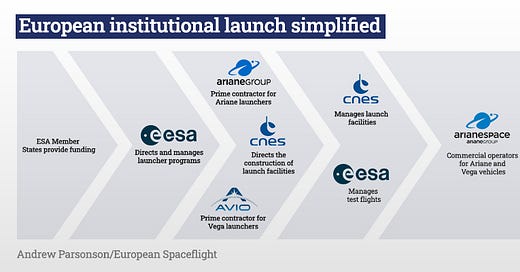Issue 47. Subscribers 1,612.
I don’t expect I’ll make many friends at ArianeGroup with this week’s main story but confusion around this subject, in my opinion, is detrimental to the European launch market.
To my 41 new subscribers, enjoy your first issue and, as always, if you have any comments, suggestions, or tips, please reply to this email.
Keep reading with a 7-day free trial
Subscribe to Europe in Space to keep reading this post and get 7 days of free access to the full post archives.





